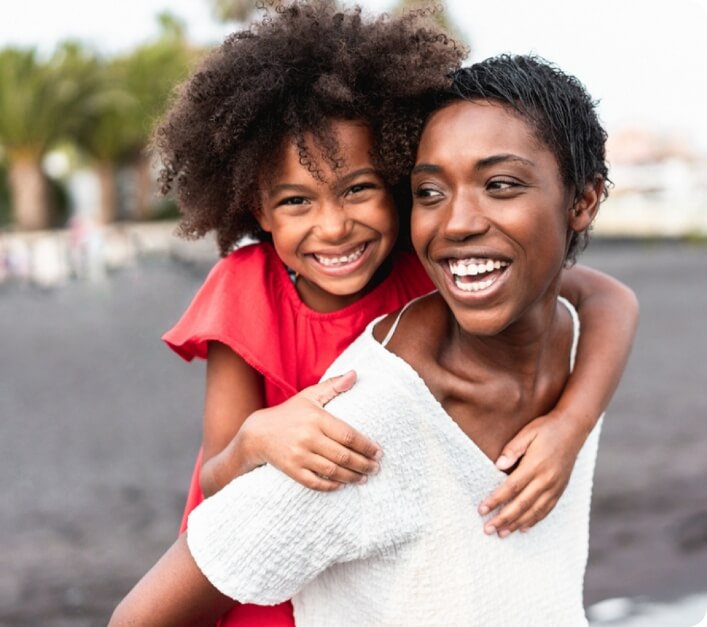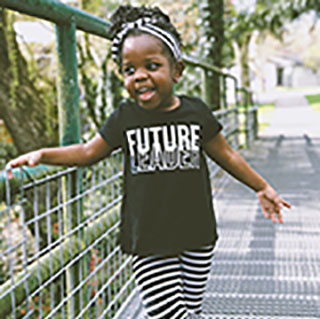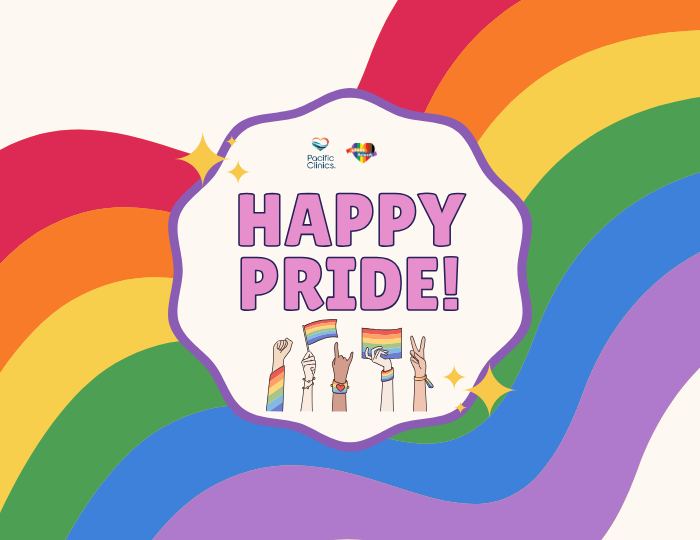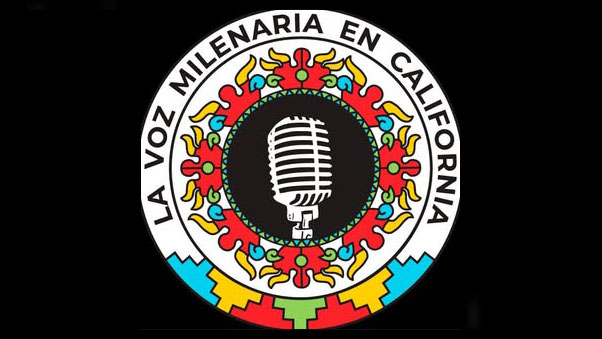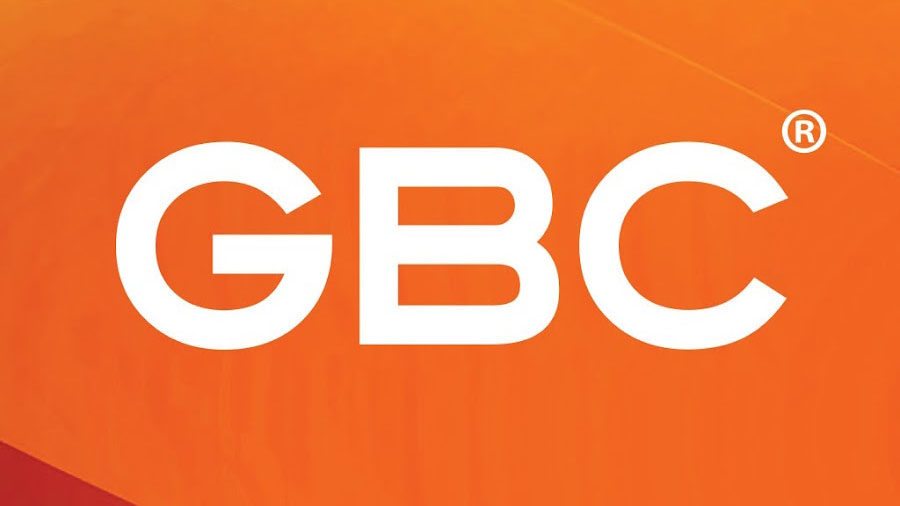With the recent news about injustice, the world erupted in discussing systemic racism, reform and addressing inequalities in all aspects of our lives. Given the addition of facing a pandemic, communities are inundated and overwhelmed with emotion from anguish to anger.
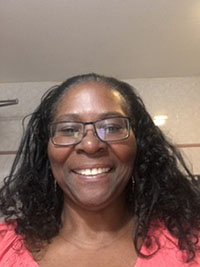 The topic of race and racism continues to be an ongoing conversation for many. Discussing race and our differences in engaging and relatable ways can help kids grow to be accepting and versed in appropriate response to racial bias. But where and how can we begin to have these types of conversations with children? We interviewed Clinical Team Supervisor Vikki Charles, LMFT who shares ways to get started.
The topic of race and racism continues to be an ongoing conversation for many. Discussing race and our differences in engaging and relatable ways can help kids grow to be accepting and versed in appropriate response to racial bias. But where and how can we begin to have these types of conversations with children? We interviewed Clinical Team Supervisor Vikki Charles, LMFT who shares ways to get started.
Who should talk to their children about racism? What should parents say? How do parents start the conversation?
The first step in talking about racism is to talk about race itself. Let kids know that there is nothing wrong with observing physical characteristics and differences. However, be careful not to make negative judgements based on those differences. Discuss that people are sometimes treated unfairly because of the color of their skin. Emphasize that being different is not weird or bad.
Talk about historical and institutional racism (e.g., slavery, Jim Crow, civil rights and the ongoing struggle for social justice). Understanding history can help explain why certain words or statements are hurtful and why current events are happening.
Use tools to help engage kids in the conversation. Books are a helpful tool in engaging and explaining concepts to kids. Talk about how they can make change by being kind to all people of all backgrounds, as well as and listening to and understanding the experiences or feelings of others who are different.
Also, remember that it is okay to not know all the answers.
It is important that children be reassured of their essential worth and be exposed to people who are not like them so they can appreciate the diversity of the world. It is important to share your belief in a brighter future.
When should parents start the conversation? What is the right age to talk to children about racism?
Keep in mind children’s developmental level and start by asking questions to understand what they are currently thinking, how they are feeling, and what they want to know.
Kids are learning and hearing about race whether parents talk to them about it or not. As young as 6 months of age they are noticing skin color and by 2 to 4 years of age they are already internalizing bias. Teach kids the words for what they see. For example, if they have a question about why someone’s hair is different, you can say, “Yes, her/his hair is very curly and pretty. That style is called an afro.” If the child points out that someone is dressed differently, teach the word for that clothing, i.e. “She is wearing a sari. Isn’t that a pretty color?” Highlighting differences in a positive way helps children develop a positive identity and it helps children think about the world as a diverse place. Follow their lead. If they ask follow-up questions, they are showing you they are ready for more.
Remember, conversations should be ongoing and should not be a one-time occurrence.
For preschoolers: At this age, your child may notice and point out differences in the people around you (i.e., at the grocery store, at the park, etc.). If your child asks about someone’s skin tone, you might say, “Isn’t it wonderful that we are all so different!” You can even hold your arm against theirs to show the differences in skin tones in your family. Point out different skin colors on television or in books.
For grade schoolers: This is the age that is important to have open talks with your child about race, diversity and racism. Discussing these topics will help your child see you as a trusted source of information on the topic, and he or she can come to you with any questions. Point out stereotypes and racial bias in media and books, such as villains or “bad guys” in movies. It’s okay to talk about more serious topics, making them easier for kids to understand by comparing racism to things kids easily understand, such as a game of baseball where a team captain is picking players based only on skin color or cultural clothing.
If your child makes comments or asks you questions about race based on school incidents or something they read or watched, further the discussion with questions such as, “How do you feel about that?” and “Why do you think that?” This is also helpful if your child heard something insensitive or if your child experienced racial bias themselves. Before responding to his or her statement or question, figure out where it came from and what it means from his or her perspective. Teach children that racism is neither nice nor fair, and they need to say how important it is to be inclusive of all people, no matter how different they may be.
These conversations begin the groundwork for your child to accept and respect everyone’s differences and similarities. As children mature, the answers to questions will become more complex. These are moments to learn what your child understands or is struggling to understand about racial bias.
How is the conversation different for younger children or teens?
Because of social media and other generational differences, teens can be exposed to more than their parents were at the same age. They may hear, and even use, derogatory words they don’t fully understand. Parents should remember that kids, including teenagers, can only take in a certain amount of information at a time. Be direct and say their words are not acceptable and ask where they heard it or what they think it means. It is okay if they become uncomfortable.
Teach teens about microaggressions. Since teens often judge others by their appearance or physical characteristics, it’s important to teach them when certain words are disrespectful and when they are okay. We need to teach teens it’s OK for them to use correct names — like African American or Asian — when they are talking about others respectfully.
Teach kids to stand up for what is right. Let them know they should speak up for people who are being treated in a racist manner. Challenge the behavior and not the person. For example, instead of calling someone a racist, you could say, “That was a racist comment. Please don’t say that again.”
My child is biracial/multiracial. How can I help them establish their identity?
It’s important to expose biracial children to both cultures. Going to specific cultural museums can be a great time to discuss their culture within a historic context while also providing so many opportunities to talk about race, racism or discrimination.
Check in local papers where culturally specific fairs are announced – a great introduction or exposure to positive elements of their culture.
What resources are available for me and my child(ren) to learn more?
Here are some great resources:
- A Peoples History of the United States by Howard Zinn
- “The Hate You Give” by Angie Thomas – Read the book or watch the film together.
- Implicit Association Test—helps you uncover your own bias and prejudices (maybe do this with your teen and discuss it together)
- “Ways to Make Sunshine” by Renée Watson
- “Stamped: Racism, Antiracism, and You” by Jason Reynolds and Ibram X. Kendi
- “Let’s Talk About Race” by Julius Lester and Karen Barbour
- “So You Want to Talk About Race” by Ijeoma Oluo
- “Teaching Tolerance. How White Parents Should Talk to Their Young Kids About Race” by Melinda Wenner Moyer
- www.apa.org/res/parent-resources/index
- www.tolerance.org/topics/race-ethnicity
- www.raceconscious.org
- www.embracerace.org



